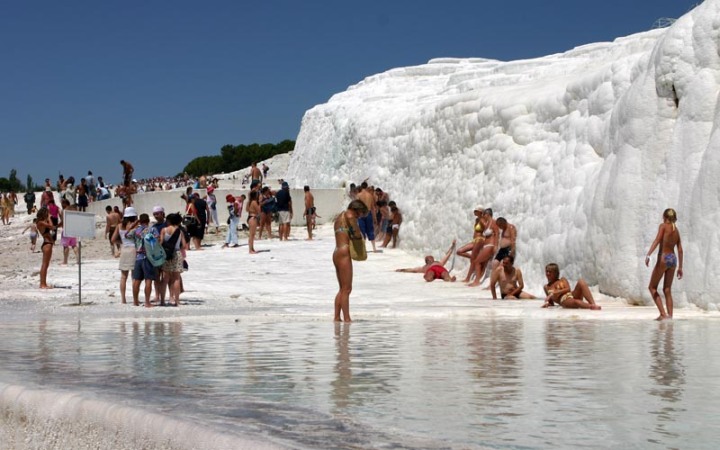Pamukkale
- Pamukkale
- Pamukkale
- Pamukkale
- Pamukkale
- Pamukkale
- Pamukkale
This antique city which is at 15 km. north of Denizli province has become famous with its thermal hot water springs, spas. Calcium Oxide deposited by rivers flowing over a terrain with travertine for many years covered everyplace a white color like cotton and a white scenery like snow has come up. This is why the name of this district is “Pamuk Kale” (Cotton Castle)…
Calcareous hot water springs here cures too many sicknesses, therefore people have come this region for centuries and taken curative baths. Pools of hotels at Pamukkale are full of this healing water. Ruins of antique Hierapolis city just near hotels have been visited by tourists arriving at the region. Among places to have been visited are 2500 audience capacity Roman Theatre dated A.D. 2nd Century, partially ruined and partially its restoration has been completed, Triumphal Arch constructed by proconsul Julius Frontinus in A.D. 1st Century, sewers, various types of sarcophagus.
Saint Philippe, one of the disciples of Christ, was martyred here in A.D. 80 and buried here. Upon will of Attalos, Bergama King 11, the city was captured by Romans and furnished with structures which were beautiful from one another in that period.
One of the baths from the period of Roman is rather good condition, which has been used as the building museum.
Little remained until now from Byzantium Basilica in ruined condition. Colors of three hot springs flowing side by site at a hill in the village of Karahayit 3 km. north of Hierapolis are red, green and yellow. Because water is full of ferrous substance it imparts color on earth. Spas which are fed from these hot springs attracts great number of tourist both domestic and foreign.









June 2nd, 2014 at 6:31 pm
Thanks very nice blog!